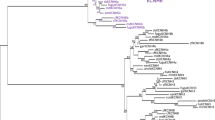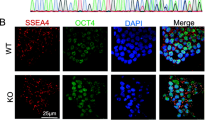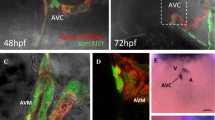Abstract
Heterologous expression systems play a vital role in the characterization of potassium voltage-gated channel subfamily H member 2 (KCNH2) gene mutations, such as E637K which is associated with long QT syndrome type 2 (LQT2). In vivo assays using zebrafish provide a means for testing genetic variants of cardiac disease; however, limited information on the role of the E637K mutation is available from in vivo systems and their utility has yet to be fully exploited in the context of LQT2. We sought to evaluate the ability of the E637K mutant channel to restore normal repolarization in larval zebrafish with a human KCNH2 orthologue, kcnh2a-knockdown. A morpholino (MO) targeting kcnh2a was injected alone or with wild type (WT) or E637K KCNH2 cRNA into zebrafish embryos at the 1–2 cell stage. Cardiac repolarization phenotypes were screened using light microscopy and the QT interval was measured by single lead electrocardiograph (ECG) analysis at 72-h post-fertilization. In the MO alone group, 17% of zebrafish had a normal phenotype; this rate increased to 60% in the WT KCNH2 cRNA injected zebrafish and to 35% in the E637K injected zebrafish. The ECG of larval zebrafish revealed that QTc was significantly prolonged in the MO alone group compared to the control group. Co-injection of WT KCNH2 cRNA shortened the QTc interval, however, that of the E637K did not. We suggest that this in vivo cardiac assay using microscopy and ECG in larval zebrafish offers a reliable approach for risk discrimination of KCNH2 mutations.




Similar content being viewed by others
References
Kawashiri MA, Hayashi K, Konno T, Fujino N, Ino H, Yamagishi M (2014) Current perspectives in genetic cardiovascular disorders: from basic to clinical aspects. Heart Vessels 29:129–141
Mizusawa Y, Horie M, Wilde AA (2014) Genetic and clinical advances in congenital long QT syndrome. Circ J 78:2827–2833
Yamaguchi Y, Mizumaki K, Hata Y, Sakamoto T, Nakatani Y, Kataoka N, Ichida F, Inoue H, Nishida N (2017) Latent pathogenicity of the G38S polymorphism of KCNE1K(+) channel modulator. Heart Vessels 32:186–192
Chen XM, Guo K, Li H, Lu QF, Yang C, Yu Y, Hou JW, Fei YD, Sun J, Wang J, Li YX, Li YG (2018) A novel mutation KCNQ1p.Thr312del is responsible for long QT syndrome type 1. Heart. https://doi.org/10.1007/s00380-018-1223-4
Tester DJ, Will ML, Haglund CM, Ackerman MJ (2005) Compendium of cardiac channel mutations in 541 consecutive unrelated patients referred for long QT syndrome genetic testing. Heart Rhythm 2:507–517
Sanguinetti MC, Jiang C, Curran ME, Keating MT (1995) A mechanistic link between an inherited and an acquired cardiac arrhythmia: HERG encodes the IKr potassium channel. Cell 81:299–307
Hayashi K, Shimizu M, Ino H, Yamaguchi M, Mabuchi H, Hoshi N, Higashida H (2002) Characterization of a novel missense mutation E637K in the pore-S6 loop of HERG in a patient with long QT syndrome. Cardiovasc Res 54:67–76
Liu L, Hayashi K, Kaneda T, Ino H, Fujino N, Uchiyama K, Konno T, Tsuda T, Kawashiri MA, Ueda K, Higashikata T, Shuai W, Kupershmidt S, Higashida H, Yamagishi M (2013) A novel mutation in the transmembrane nonpore region of the KCNH2 gene causes severe clinical manifestations of long QT syndrome. Heart Rhythm 10:61–67
Song W, Shou W (2012) Cardiac sodium channel Nav1.5 mutations and cardiac arrhythmia. Pediatr Cardiol 33:943–949
Berghmans S, Butler P, Goldsmith P, Waldron G, Gardner I, Golder Z, Richards FM, Kimber G, Roach A, Alderton W, Fleming A (2008) Zebrafish based assays for the assessment of cardiac, visual and gut function—potential safety screens for early drug discovery. J Pharmacol Toxicol Methods 58:59–68
Jou CJ, Barnett SM, Bian JT, Weng HC, Sheng X, Tristani-Firouzi M (2013) An in vivo cardiac assay to determine the functional consequences of putative long QT syndrome mutations. Circ Res 112:826–830
Dhillon SS, Doro E, Magyary I, Egginton S, Sik A, Muller F (2013) Optimisation of embryonic and larval ECG measurement in zebrafish for quantifying the effect of QT prolonging drugs. PLoS ONE 8:e60552
Arnaout R, Ferrer T, Huisken J, Spitzer K, Stainier DY, Tristani-Firouzi M, Chi NC (2007) Zebrafish model for human long QT syndrome. Proc Natl Acad Sci USA 104:11316–11321
Asakawa K, Suster ML, Mizusawa K, Nagayoshi S, Kotani T, Urasaki A, Kishimoto Y, Hibi M, Kawakami K (2008) Genetic dissection of neural circuits by Tol2 transposon-mediated Gal4 gene and enhancer trapping in zebrafish. Proc Natl Acad Sci USA 105:1255–1260
Hodatsu A, Konno T, Hayashi K, Funada A, Fujita T, Nagata Y, Fujino N, Kawashiri MA, Yamagishi M (2014) Compound heterozygosity deteriorates phenotypes of hypertrophic cardiomyopathy with founder MYBPC3 mutation: evidence from patients and zebrafish models. Am J Physiol Heart Circ Physiol 307:H1594–H1604
Huttner IG, Trivedi G, Jacoby A, Mann SA, Vandenberg JI, Fatkin D (2013) A transgenic zebrafish model of a human cardiac sodium channel mutation exhibits bradycardia, conduction-system abnormalities and early death. J Mol Cell Cardiol 61:123–132
Bill BR, Petzold AM, Clark KJ, Schimmenti LA, Ekker SC (2009) A primer for morpholino use in zebrafish. Zebrafish 6:69–77
Chaudhari GH, Chennubhotla KS, Chatti K, Kulkarni P (2013) Optimization of the adult zebrafish ECG method for assessment of drug-induced QTc prolongation. J Pharmacol Toxicol Methods 67:115–120
Milan DJ, Jones IL, Ellinor PT, MacRae CA (2006) In vivo recording of adult zebrafish electrocardiogram and assessment of drug-induced QT prolongation. Am J Physiol Heart Circ Physiol 291:H269–H273
Tsai CT, Wu CK, Chiang FT, Tseng CD, Lee JK, Yu CC, Wang YC, Lai LP, Lin JL, Hwang JJ (2011) In-vitro recording of adult zebrafish heart electrocardiogram—a platform for pharmacological testing. Clin Chim Acta 412:1963–1967
Mao H, Lu X, Karush JM, Huang X, Yang X, Ba Y, Wang Y, Liu N, Zhou J, Lian J (2013) Pharmacologic approach to defective protein trafficking in the E637K-hERG mutant with PD-118057 and thapsigargin. PLoS ONE 8:e65481
Wang Y, Huang X, Zhou J, Yang X, Li D, Mao H, Sun HH, Liu N, Lian J (2012) Trafficking-deficient G572R-hERG and E637K-hERG activate stress and clearance pathways in endoplasmic reticulum. PLoS ONE 7:e29885
Delisle BP, Anson BD, Rajamani S, January CT (2004) Biology of cardiac arrhythmias: ion channel protein trafficking. Circ Res 94:1418–1428
Acknowledgements
The authors gratefully acknowledge Dr. Attila Sik and Dr. Ferenc Muller (University of Birmingham) for technical advice and helpful discussion concerning larval ECG measurement in Zebrafish, and thank Takako Obayashi for technical assistance. The work was supported by grants from the Ministry of Health, Labor and Welfare of Japan for Clinical Research on Intractable Diseases (H26-040 and H24-033 to K.H.), grant-in-aid for Scientific Research from Japan Society for the Promotion of Science (26460670 and 15KK0302 to K.H.), Takeda Science Foundation to K.H.
Author information
Authors and Affiliations
Corresponding author
Ethics declarations
Conflict of interest
The authors declare that they have no conflicts of interest.
Rights and permissions
About this article
Cite this article
Tanaka, Y., Hayashi, K., Fujino, N. et al. Functional analysis of KCNH2 gene mutations of type 2 long QT syndrome in larval zebrafish using microscopy and electrocardiography. Heart Vessels 34, 159–166 (2019). https://doi.org/10.1007/s00380-018-1231-4
Received:
Accepted:
Published:
Issue Date:
DOI: https://doi.org/10.1007/s00380-018-1231-4




